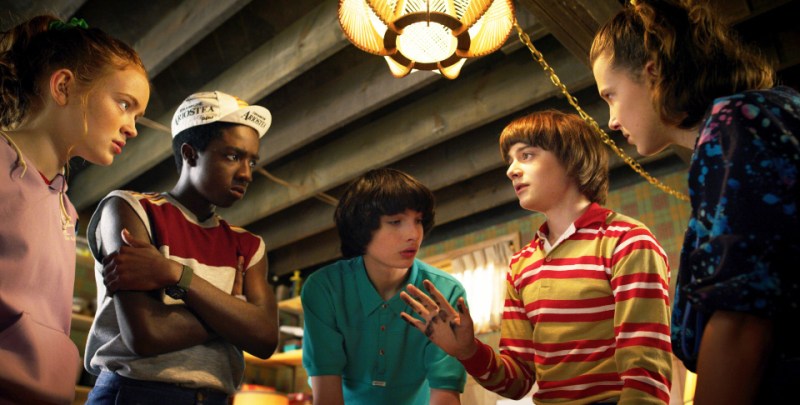As the Cold War continues, Russians have infiltrated the small town of Hawkins and are planning something disastrous. Billy has been infected by the Mind Flayer, a monster that grows by “flaying” its victims, linking them to itself and controlling them like the host of a virus. Nancy and Jonathan, who have begun working at the Hawkins Post, begin investigating reports of fertilizer-eating, rabid rats.
In the third season of Stranger Things, a thrilling science-fiction Netflix series created by Matt and Ross Duffer, each of these storylines becomes tied to the others, revealing a much larger issue at hand.
The award-winning television series centers on the residents of Hawkins, whose lives are turned upside down (pun intended) when 12-year-old Will Byers goes missing. Discovering links to top-secret government experimentation and supernatural existence along the way, Will’s brother and company try to find him while simultaneously fighting for their lives.
The third season is set in 1985, in the middle of the Cold War. All characters have seemingly resumed their normal lives, until Steve, Dustin and newcomers Robin and Erica discover the aforementioned Russian invasion.
What is most striking about this season is that, unlike the other two, it is noticeably light-hearted. As we are given a glimpse into the characters’ everyday lives (you know, besides fighting Demogorgons and evil government scientists all day), we are able to relate to each of the characters in a way that was limited in previous seasons.
At the same time, the third season does an excellent job of highlighting precise details from the time period, adding to the overall authenticity and enjoyment of the season. Subtle references to New Coke or “Back to the Future” offer viewers a glimpse of what the Duffer Brothers imagine life in the ’80s was truly like. From the music to the carnival rides, each element of the show aligned perfectly with what would have been 34 years ago.
Another well-integrated aspect of this season is the attention to each character. In the second season of Stranger Things, each new character seemed forced and out of place. Sticking characters like Max (probably only to increase female presence in the show) or Billy last season and not giving them any role or purpose whatsoever made every scene feel strained. However, each character of this season has their own meaningful nuances.
Erica Sinclair, Lucas’s younger sister, is one of the most noteworthy characters in the season. Her sassy attitude paired with Dustin’s innocence makes for one of the most entertaining duos in the series.
Billy is another highlight of the season. With Billy’s disposition flitting from episode to episode, scene to scene, second to second, we are able to see every angle of Dacre Montgomery’s talent as an actor, something the writers didn’t take nearly enough advantage of last season. From new villains to new sidekicks, each individual in the season brings unique but visible value.
Despite the relatability and comedy each of the characters and events brought, there was never a moment I wasn’t kept on the tips of my toes as a viewer. Each explosion, scream and cliffhanger made watching all eight episodes at once a necessity.
The Mind Flayer returns with a vengeance for Eleven and the others. Unlike in the previous two seasons, this villain could not be so easily created for season three. Using computer-generated imagery (CGI), this season presents one of the most harrowing, yet breathtaking, characters television has ever seen: a culmination of the disintegrated bodies of his victims. It is absolutely disgusting, but undeniably gripping: the perfect combination.
While a lot of things work in season three, one thing it clearly lacks is a firm scientific explanation for what is happening. The series has heavily transitioned, from science-fiction in season one, to a fantasy-like realm in season three. The first season offered detailed explanations and scientific theories for the ostensibly preposterous series of events taking place, lending an element of reality and, thus, an implicit fear of its possibility. However, season three’s rushed explanations and flimsy scientific links make the whole thing feel outlandish and disconnected.
If you can get over the fact that it’s largely unrealistic and a little rushed, Stranger Things’ third season has far exceeded the performance of its predecessors. The acting, plot and special effects make this a must-watch for your next Netflix-binge night in!
Contact Ishani Singh at ishanisingh31 ‘at’ gmail.com.
